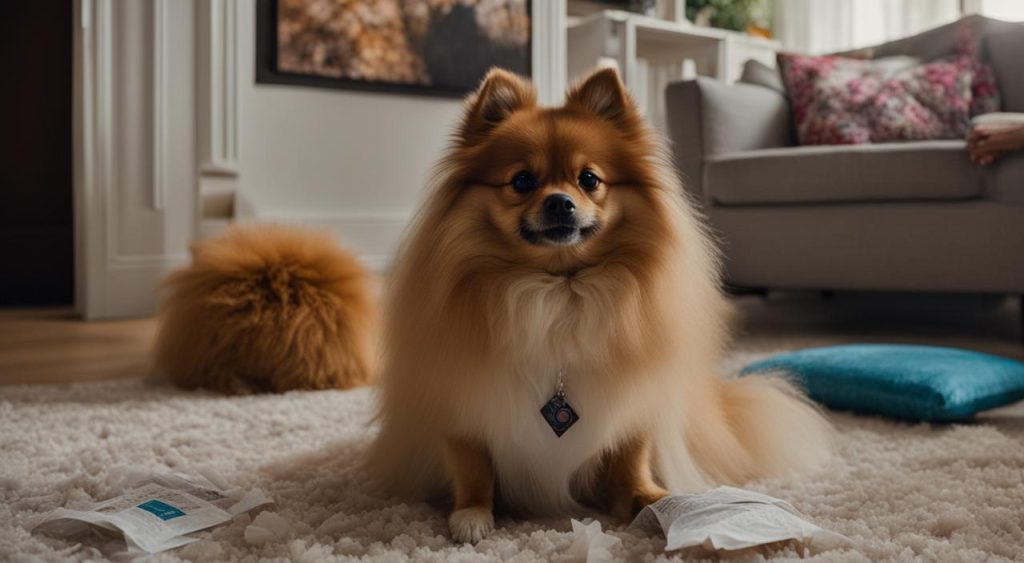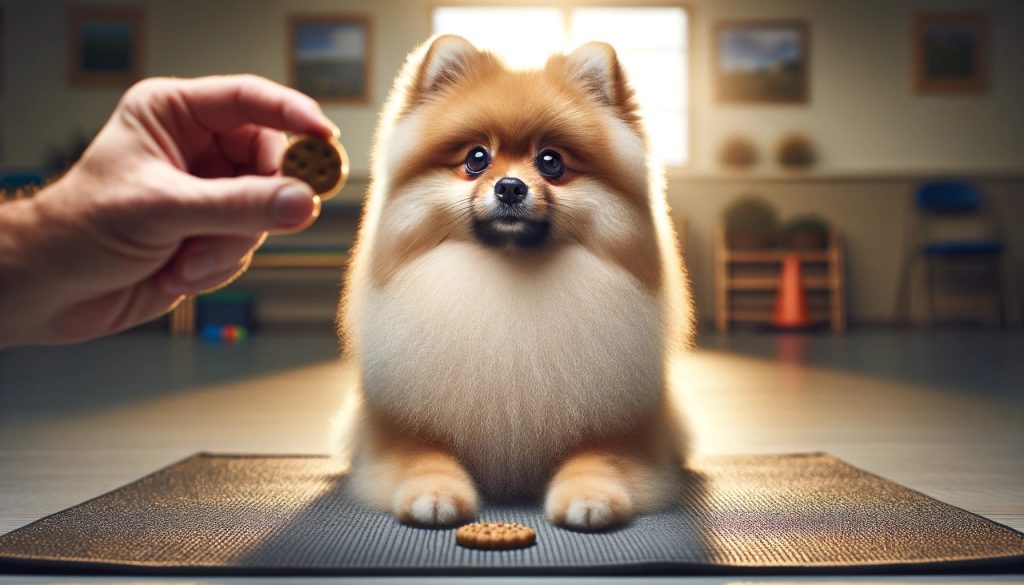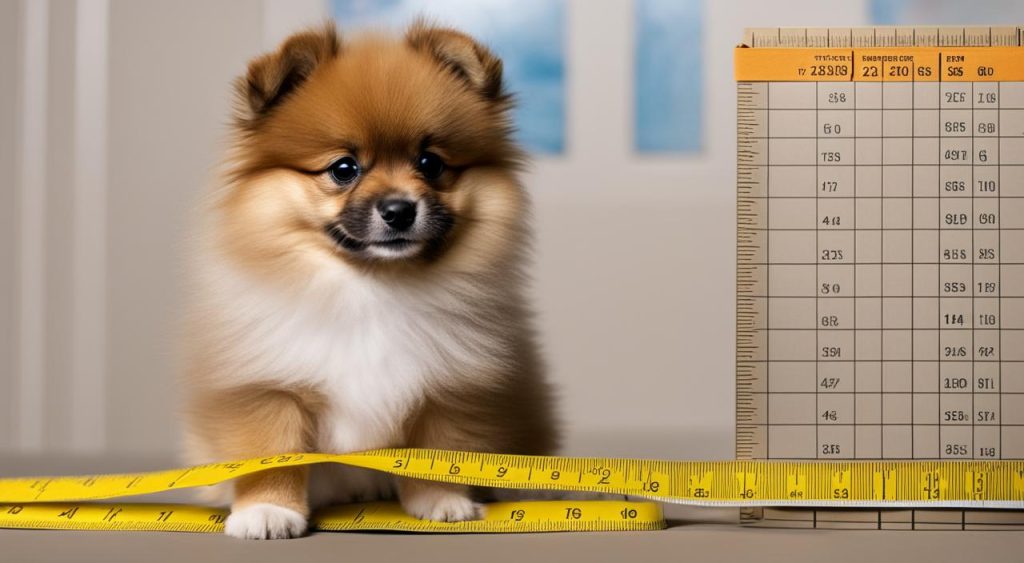Pomeranians are adorable and fluffy companions known for their vibrant personalities. However, one common behavior that many Pomeranian owners encounter is excessive growling. Understanding why Pomeranians growl and how to manage this behavior is essential for a harmonious bond with your furry friend.
Excessive growling in Pomeranians can occur for various reasons. During play, growling is a way for Pomeranians to express their excitement and engage in interactive behavior. Additionally, growling can be a way for Pomeranians to assert dominance, show anxiety or fear, respond to pain or discomfort, or protect their food and possessions.
Growling is a form of communication for Pomeranians, and it is essential to recognize that it can be a normal behavior. However, it is crucial to identify the underlying cause of the growling and address it appropriately through training and socialization.
Key Takeaways:
- Excessive growling in Pomeranians can occur during play, to assert dominance, out of anxiety or fear, in response to pain or discomfort, or to protect their food or possessions.
- Understanding the underlying cause of the growling is crucial in managing and addressing the behavior.
- Distinguishing between playful growls and threatening growls can help determine the intent behind the growling.
- Pomeranian puppies may growl during their transitional period when trying to establish their place in the family hierarchy.
- Socializing Pomeranians from a young age and rewarding good behavior through positive reinforcement training can help manage and prevent excessive growling.
Distinguishing Playful Growls From Threatening Ones
Pomeranians have a unique way of communicating through growling, and understanding the different types of growls can help you decode their intentions. Playful growls in Pomeranians are typically a result of excitement and happiness. These growls are often higher-pitched and softer, accompanied by yip-like noises or even moments of silence.
“Playful growls in Pomeranians are characterized by their higher pitch and softer tone, revealing their joy and enthusiasm.”
On the other hand, threatening growls in Pomeranians show a different demeanor. These growls are deeper and longer, often accompanied by bared teeth, a raised tail, and a fixed gaze. It is crucial to recognize the signs of a threatening growl to ensure your safety and the well-being of your Pomeranian.
“Threatening growls in Pomeranians contain deeper tones, longer duration, and are often accompanied by aggressive body language, indicating a more serious and potentially dangerous situation.”
The body stance of a Pomeranian during growling can also provide valuable cues. Playful growls are usually associated with an enthusiastic and animated body posture, with a wagging tail and relaxed facial expressions. In contrast, threatening growls are often accompanied by a tense body stance, raised hackles, and an intense stare.
“Body language during growling is a crucial indicator of a Pomeranian’s intentions. Pay attention to their body posture for a more accurate understanding.”
Recognizing the differences in pitch, duration, and body stance during growling can help you decipher whether your Pomeranian is playfully engaging or exhibiting threatening behavior. By understanding their communication cues, you can respond appropriately and ensure a harmonious relationship with your beloved Pomeranian.
Reasons for Growling in Puppies and Dogs
Puppies may growl during their transitional period as they try to establish their place in the family hierarchy. It is important for all family members to establish themselves as leaders through proper training and consistent discipline. This helps puppies understand their position in the pack and reduces the need for growling as a means of asserting dominance.
During the transition period, puppies are also learning to navigate their surroundings and interact with others. This can lead to occasional growling as they test boundaries and figure out their place in the social order. By providing clear training, guidance, and socialization, you can help ensure your Pomeranian puppy grows into a well-behaved and balanced adult.
As Pomeranians mature into adult dogs, growling can sometimes be a sign of discomfort or pain. Injuries, illnesses, or underlying health issues can cause behavioral changes, including increased growling. It’s crucial to address any medical concerns promptly, seeking veterinary care to identify and treat the source of discomfort.
Additionally, behavioral changes in adult Pomeranians, such as increased growling, may arise from changes in their environment or routine. Moving to a new home, introduction of new family members or pets, or major life changes can trigger anxiety and stress, leading to growling. Creating a consistent and secure environment for your Pomeranian can help alleviate these behavioral issues.
Understanding the reasons behind growling in puppies and adult Pomeranians allows you to address their needs effectively. By establishing a hierarchy through training, addressing discomfort or pain, and providing a stable environment, you can create a harmonious and contented life for your beloved Pomeranian.
Managing and Training Pomeranian Growling
To ensure that your Pomeranian doesn’t growl excessively, it’s crucial to start socializing them from a young age. By exposing them to various people, animals, and environments, you can help them become comfortable and confident in different situations. This early socialization plays a vital role in preventing aggressive behavior and growling.
Equally important is recognizing and addressing the triggers that may cause your Pomeranian to growl. Anxiety and fear are common factors that can contribute to excessive growling. By identifying these triggers and providing a safe and supportive environment, you can help alleviate their anxiety and reduce the likelihood of growling.
Positive reinforcement training is highly effective when it comes to teaching Pomeranians not to growl. By using rewards and praises to reinforce good behavior, such as remaining calm in the presence of potential triggers, you can shape their response and encourage them to choose alternative behaviors instead of growling.
If you find that your Pomeranian’s growling persists despite your best efforts, seeking professional help from a qualified dog trainer or behaviorist is a wise decision. These professionals have the expertise to assess the situation, identify the root causes of aggression, and provide you with tailored training techniques and strategies to address the issue effectively.





